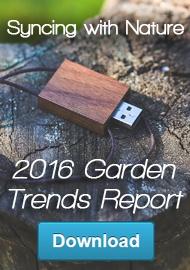Last year, we sat down with Dr. Doug Tallamy to talk biodiversity and native plants. Tallamy, professor of Entomology and Wildlife Ecology at the University of Delaware said that yards that truly thrive support ecosystems. 
We cited layered landscapes as a top 2016 garden trend. The trend of choosing plants with a purpose will continue to spread to the backyard and beyond. (Layered Landscape concepts can even apply to the PR industry!)
Here are some tips on how to create your own layered landscape.
Continue reading to learn how to create a layered landscape in your backyard.
Create a Layered Landscape
- Reduce the amount of lawn in your yard. These “green deserts” require a lot of water and do nothing to attract, feed or protect wildlife.
- Build a 3-D landscape in your yard. Start with the tree line and simply layer shrubs and flowers underneath. Think about structure when choosing what to plant.
- Plant more native species. The species of plant will change depending on where you live. For the Northeast United States, start with woody trees and shrubs, such as oaks, willows, and Viburnums. Then, add golden rod and cardinal flower.
- Focus on the most productive plants that are also beautiful and form a plant community comprised of diverse species. This will help keep your landscape healthy in the event of disease. It will also help attract beneficial wildlife like pollinators.
- Don’t forget to look up! Avoid tree blindness by regularly surveying your land to see what is thriving and what needs a little more attention. Contact a local arborist to talk about caring for the trees on your property.
Native plants work hard
It’s no secret that native plants are beneficial to the environment. From saving water to attracting wildlife, native plants work harder. Back to Natives Restoration outlines the major benefits of native plants in an infographic:
















